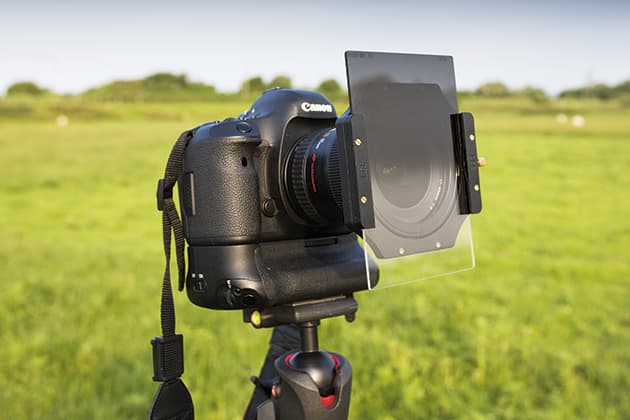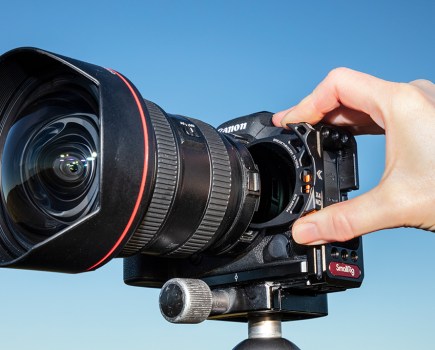Lee Filters ND grads – key specifications
- Filter holder: Designed to fit Seven5, 100mm and SW150 sizes
- Material: Optically corrected resin
- Graduations available: Soft, medium, hard, very hard
- Filters available: 0.3ND (1 stop), 0.45ND (1.5 stops), 0.6ND (2 stops), 0.75ND (2.5 stops), 0.9ND (3 stops) and 1.2ND (4 stops)
Often found in landscape photographers’ bags and filter pouches, the trusty neutral density graduated filter, or ND grad for short, is an invaluable accessory that gives us the control we need to balance the exposure within a scene, typically between a bright sky and a considerably darker foreground.
There’s an argument that a similar effect can be created by shooting in raw and using the graduated filter within Camera Raw or Lightroom, but remember that not all cameras have as wide a dynamic range as others when it comes to returning highlight and shadow detail. Meanwhile, there are a number of photographers, myself included, who find it more satisfying to get results right at the point of capture rather than take the laid-back approach of attempting to recreate the effect later.
Lee Filters has been producing different strengths of ND grads in two different gradations for as long as I can remember. My soft ND grads are usually the filters I turn to first when I’m looking to gently balance an exposure where there’s no definite transition between the sky and foreground. My hard grads tend to see less use, and are pulled from my bag only when there is more of a distinct separation between the foreground and sky such as at the coast, where the horizon often cuts sharply through the image.
It’s not common knowledge, but Lee Filters has also been producing medium and very hard gradations of its ND grads for several years, but these custom-made filters have only been made available to professionals who’ve requested them. They have been so popular with the working pro that Lee Filters has taken the decision to add them to its ND grad range, enabling everyone else to get their hands on them. Keen to find out how they perform, we requested samples of both before setting off on a jaunt around the Kent coast.
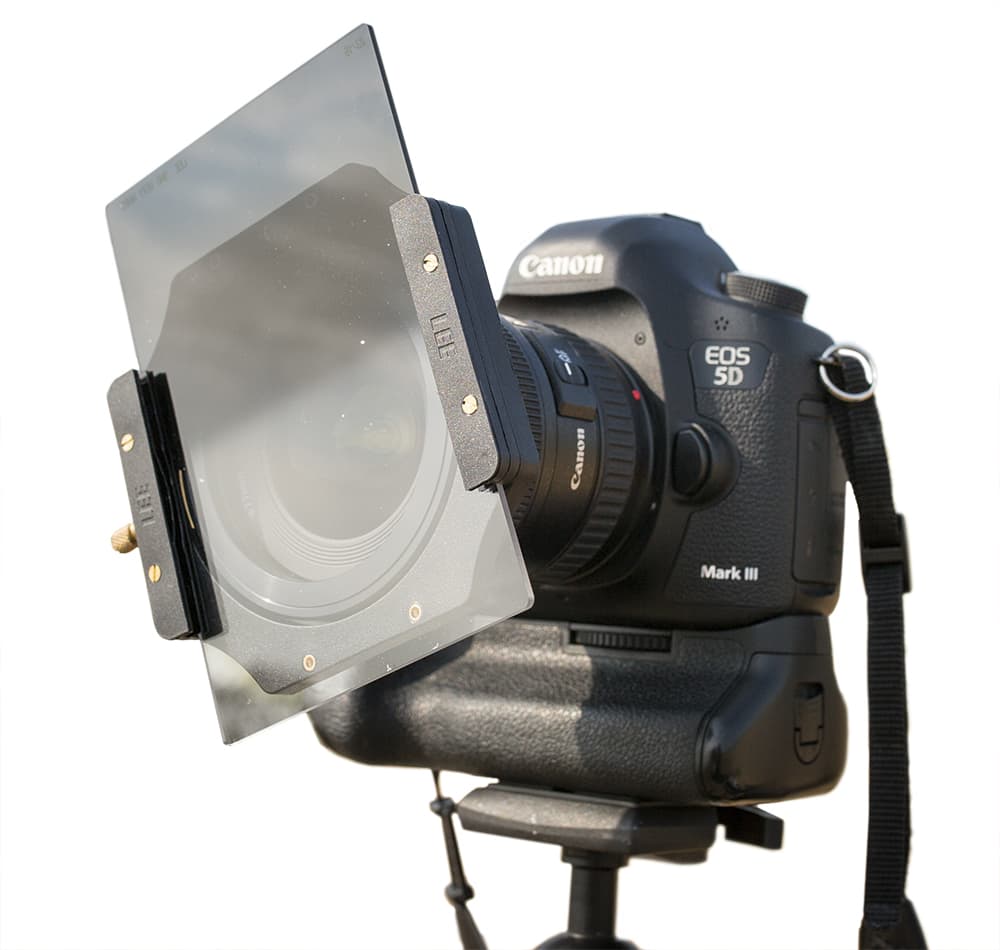
The ND grads were tested on a Canon EOS 5D Mark III with 17-40mm f/4 lens
Features
The medium and very hard graduated filters share many similarities with the soft and hard grads that we’ve seen before from Lee Filters. They’re handmade using optically corrected resin as opposed to glass.
Unlike some filter manufacturers, Lee Filters casts all its own resin sheets, which the manufacturer claims guarantees true optical flatness. Once the resin sheets have been created, they’re handed over to a dye technician who dips them into a dye bath by hand; it’s this process that creates the graduated line. Depending on the strength of the filter being made, a resin sheet can take between 30 and 40 minutes to dye, with up to three 100x150mm filters being produced from it.
On the subject of size, the two new ND gradations are made to cater for those using the Seven5, 100mm and SW150 systems. Like the soft and hard grads, the medium and very hard gradations are also available in the same half-stop incremental strengths. The weakest is a 0.3ND that’s equivalent to 1 stop. The other five filter strengths include a 0.45ND (1.5 stops), 0.6ND (2 stops), 0.75ND (2.5 stops), 0.9ND (3 stops) and 1.2ND (4 stops).
Being the slot-in type of filter, you’re required to attach the appropriate size adapter ring to your lens first before attaching a filter holder. With the filter holder attached, it’s then a simple task of sliding the ND grad into the guide and gradually lowering it to the point at which it has the desired darkening effect.
Prices
The filters are available either as single filters or as part of a grad kit. Prices for a single filter (0.3ND to 0.9ND) for the Seven5 system start at £52, rising to £78 for the 1.2ND. Single filters (0.3ND to 0.9ND) for the 100mm system start at £72, while there’s a premium to pay for the 1.2ND, which costs £109. Single filters (0.3ND to 0.9ND) for the larger SW150 system cost £80, with the 1.2ND priced at £120. The previously mentioned grad sets consist of three filters (0.3ND, 0.6ND and 0.9ND) and cost £138, £180 and £215 respectively for the Seven5, 100mm and SW150 systems.
The above prices exclude a filter holder, so if you don’t already have one you’ll need to budget an extra £66 for a Seven5 filter holder, £54 for a 100mm filter holder and £150 for a SW150 filter holder. There’s the cost of adapter rings to consider, too, with Seven5 adapter rings (37.5-72mm) costing around £18 each, 100mm (49-105mm) costing around £35-£50 and SW150 filter rings (72-105mm) working out at around £70-£95 each.
In use
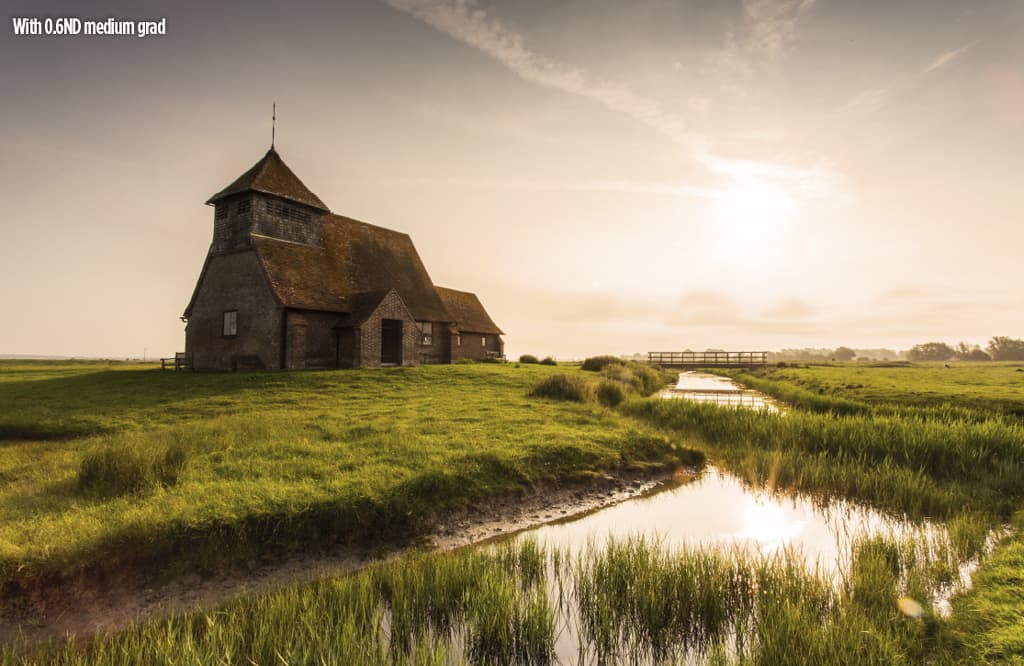
Here the 0.6ND medium ND grad was used to retain highlight detail in the sky
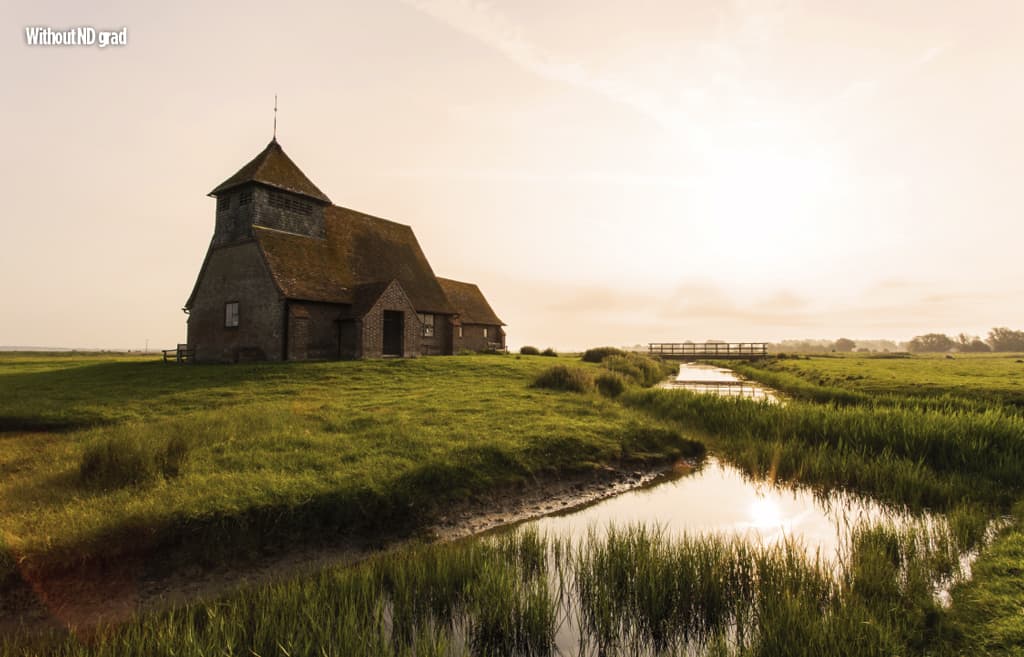
Highlight detail can easily get clipped in the sky when shooting towards the light
Lee Filters supplied two grad kits for review, comprising 0.3ND, 0.6ND and 0.9ND strengths in both medium and very hard gradations. Upon arrival at Fairfield Church in Kent, I kept the very hard ND grad set stowed in my bag and opted to use the medium grad kit instead, knowing it would be the better option for a subject rising into the sky. After equipping my wideangle lens with a 77mm adapter ring and filter holder, I pulled the 1 stop (0.3ND) grad from its supplied filter pouch and unwrapped it from its protective paper.
Comparing shots with and without the grad revealed the filter was doing its job of retaining detail in the sky, but a glance at the histogram on the rear of the LCD showed that highlight detail was still being clipped. Swapping the 0.3ND for the 0.6ND resulted in a better- balanced exposure from the foreground to the sky, with the 0.9ND darkening the sky a little too much to the point that it became obvious an ND filter had been used.
Heading up the road towards the coast at Dungeness presented the ideal environment to switch over and test the very hard gradation kit. Although there was virtually no cloud detail on the day of testing, the ND grads were used again to prevent overexposure in the sky – the very sharp transition allowing for more precise separation between the land and sky above.
The 0.3ND was used successfully to balance exposure and capture an image of an RNLI lifeboat being launched. The 0.6ND very hard grad was also used to prevent overexposure in a few scenes when shooting directly towards the light. I then reverted to the 0.6ND medium grad for shooting an abandoned boat which, much like the earlier church scene, protruded above the line of the horizon into the sky.
No faults or issues were found during testing other than a few specs of dust and dirt that were duly removed with a lens cloth. The filters slotted effortlessly into place and there was enough friction in the holder to prevent a filter ever slipping out.
A nice touch is the printing of the filter strength and gradation at the top right corner of each filter. This text is in yellow and easily identifiable from behind the camera. As I discovered, it can also help you find the filter you want from a lens pouch without having to pull it right out.
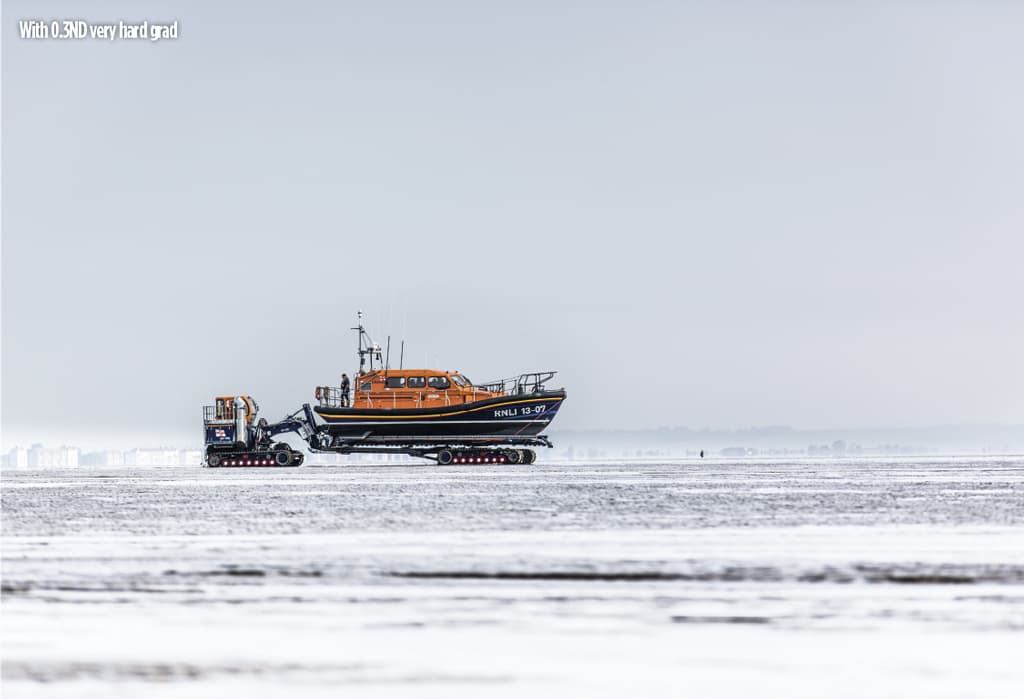
Notice how the 0.3ND very hard grad has helped resolve the detail on the horizon compared to the image below

Without an ND grad, the detail on the horizon is lost, and the muted colour of the sky is rather bland in comparison
Lee Filters ND grads – our verdict
Until recently, a majority of photographers have only had the choice of purchasing Lee Filters ND grads in soft or hard gradations, so it’s great to see Lee Filters expanding its range. The medium gradation slots in well between the soft and hard versions, and the very hard ND grads offer an even sharper transition between clear and dark than we’ve seen before. The gradation that’s best for you depends on what you shoot. During a day of testing I found that I pulled out the medium ND grads much more than the very hard grads. As their name suggests, the medium grads offer a pleasingly subtle blend for minimal impact on the foreground in a landscape scene. The effect is no better described than by professional landscape photographer Joe Cornish who calls it a ‘Goldilocks Grad’.
The very hard gradation is less likely to be used by photographers who shoot a broad range of landscapes, but for those specialising in seascapes or scenes where there are very defined horizon lines, it’s undoubtedly the best choice. Of all the ND graduated filters that Lee Filters produces, the 0.6ND medium grad is one of the most versatile. But having used both filter sets and witnessed how useful it is to have control of darkening the sky by up to 3 stops, the medium filter set is by far the best all-round option if you don’t already own any ND grads, and your budget permits.

